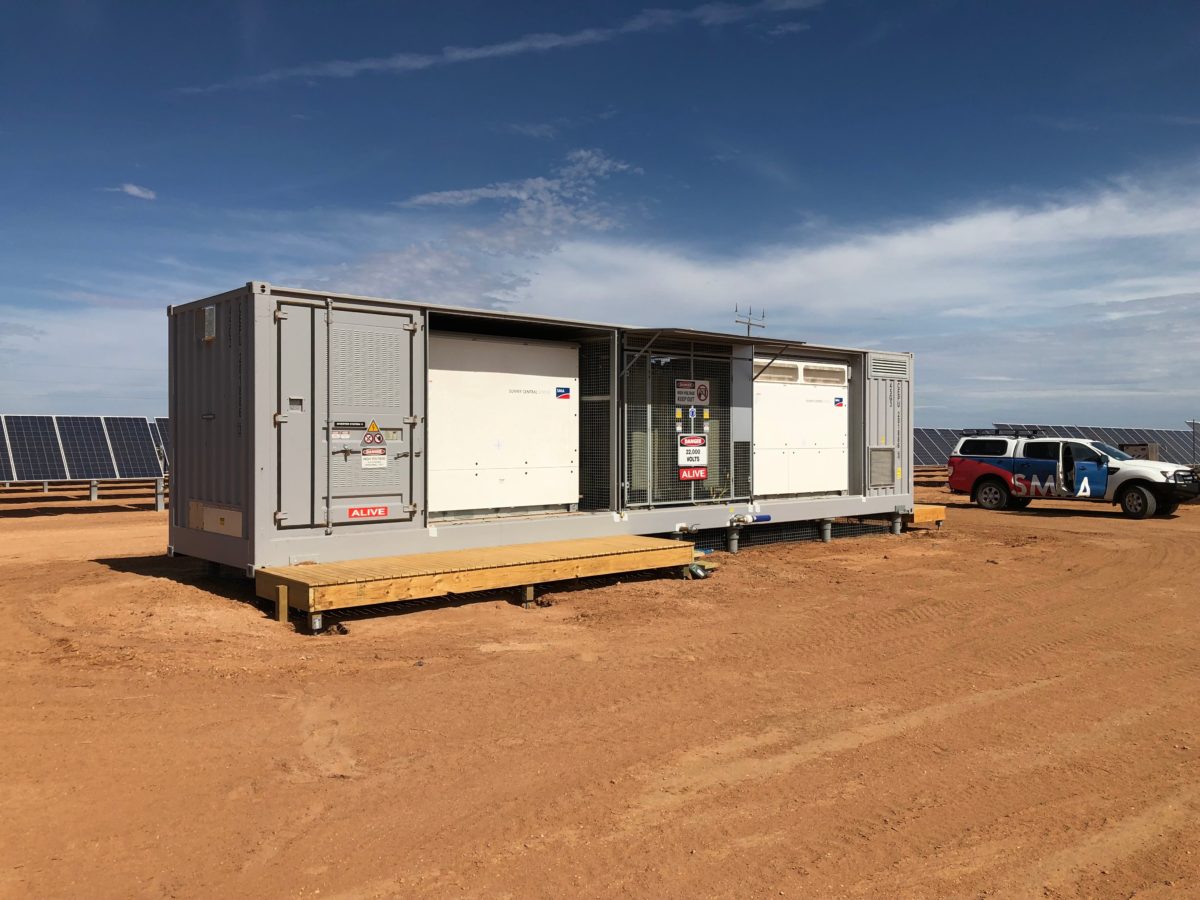System strength issues in the West Murray region of western New South Wales and Victoria hit the utility-scale solar industry with a bang in September 2019, when five solar farms were curtailed by 50% to ensure grid stability. Almost immediately, it was reported that all the affected generators had deployed SMA inverters.
One outcome of this unplanned brand solidarity was that SMA was able to contribute to a collective solution for the curtailed solar farms. The overview provided by their combined effect on the grid presented the opportunity to deliver a brand-enhancing response to what was emerging as a wicked problem for the Australian solar industry.
The Australian Energy Market Operator (AEMO) had already declared system strength shortfalls in South Australia and Tasmania. Subsequent to the curtailments in the West Murray region, system strength in North Queensland was found to be so challenged that AEMO reported two solar farms and one wind farm might have their output curtailed to zero.
Sunny Central the pivot point
Scott Partlin, Head of After Sales Service at SMA says that of the five West Murray plants, one is using the older model SMA Sunny Central 800CP-XT, while the other four more recently constructed plants are using a combination of the 2.5MVA and 2.75MVA SMA Sunny Central EV series inverter.
What is it about these inverters that has allowed the settings to be tuned and orchestrated for harmonious delivery of power to the grid?
“The Sunny Central EV, has a new control methodology in the inverter which was developed by SMA R&D after engineers spent time in Australia and with AEMO to see in more exact detail the problems” that were presenting in the wide area network, Partlin told pv magazine this morning.
The same control methodology wasn’t implemented in the older series Sunny Central CP XT series, which is no longer in production and therefore not an R&D priority for SMA.
Nonetheless, says Partlin, SMA engineers were able to tune some specific parameters that the Sunny Central CP XT uses to synchronise to the grid. “They were tuned so the inverters were able to more quickly ‘lock back onto’ the grid after certain fault scenarios.”
Firming up a powerful offering
Asked about the technological significance of SMA’s inverter-based fixes to the West Murray challenges, Partlin emphasises that no hardware changes, no new physical components were required to engineer the solution: “I think developing a new capability in the inverter firmware, specifically to address a ‘live’ problem on the grid and allow plants to return to normal operation is momentous.
“It shows the potential of renewable asynchronous generation. With what was in reality some changes to ones and zeroes in code, we were able to solve a performance problem that created risk on the network.”
He says the lessons learned in this instance will enable the industry and other technology providers to more quickly respond to similar issues, “and that, in the long term, leads to a lower cost delivery of electricity from renewable energy generators”.
As testing begins today to correlate the effects of actual generator output with desired grid responses to the ramping up of exports to the grid, Partlin says there is a mood of cautious optimism among the participants.
“You’re dealing with a lot of engineers here,” so he says overt confidence won’t be expressed, “until all performance results are verified”.
Over the course of this week, each solar farm will perform a series of overlapping tests, such that all the solar farms together progressively increase their operating output with the new control firmware and settings applied.
Better than Netflix
Outcomes of the testing are being monitored in Europe under Covid lockdown as closely as they are here.
“The team back in SMA Germany are feeling pretty proud of what has been achieved thus far.” says Partlin. “Their dedication to supporting SMA’s customers and their ingenuity have delivered something which should allow a significant increase in renewable energy hosting capacity on the network.”
Although the shock of initial curtailment of the five solar farms initially caused apprehension, accusations and anger throughout the industry, Partlin says that AEMO’s moves to dedicate resources and work in a consultative manner towards a solution have gone a long way towards enabling a promising finale.
“It was only AEMO’s hard work and collaborative approach, especially this year, that ultimately meant the solution could actually be used by the generators,” he acknowledges.
This content is protected by copyright and may not be reused. If you want to cooperate with us and would like to reuse some of our content, please contact: editors@pv-magazine.com.









By submitting this form you agree to pv magazine using your data for the purposes of publishing your comment.
Your personal data will only be disclosed or otherwise transmitted to third parties for the purposes of spam filtering or if this is necessary for technical maintenance of the website. Any other transfer to third parties will not take place unless this is justified on the basis of applicable data protection regulations or if pv magazine is legally obliged to do so.
You may revoke this consent at any time with effect for the future, in which case your personal data will be deleted immediately. Otherwise, your data will be deleted if pv magazine has processed your request or the purpose of data storage is fulfilled.
Further information on data privacy can be found in our Data Protection Policy.